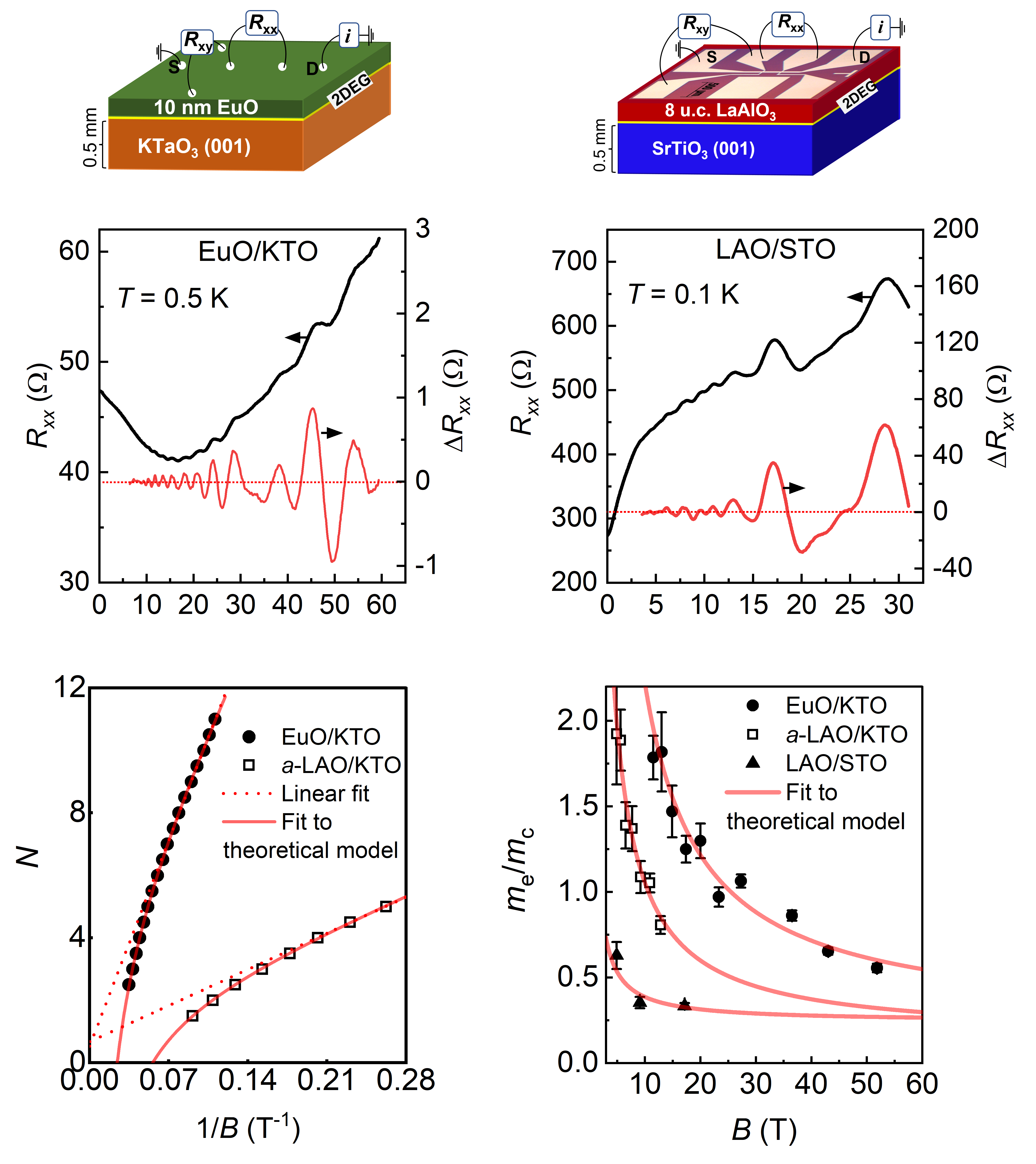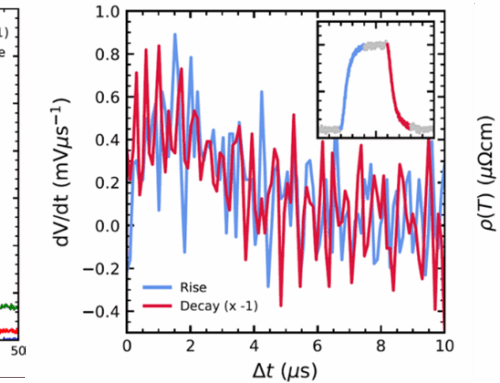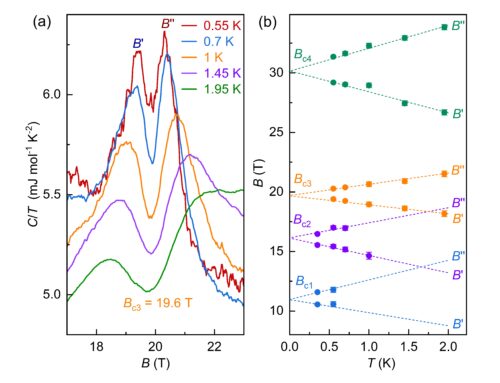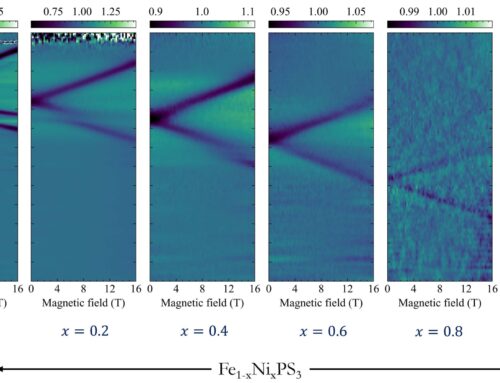Km Rubi, NHMFL, Los Alamos, USA, Walter Escoffier, LNCMI Toulouse, Uli Zeitler, HFML-FELIX Nijmegen.
In the last two decades, two-dimensional electron systems (2DES) have been observed at the surfaces and interfaces of severalperovskite transition-metal oxides, so-called complex oxides. In particular, the widely studied 2DESs based on SrTiO3 (STO) and KTaO3 (KTO) exhibit various intriguing phenomena, such as a large magnetoresistance, Rashba spin-orbit interaction, 2D superconductivity, and magnetism, which do not exist in their bulk counterparts. In a quest to understand comprehensively the complex electronic structure in oxide interfaces that gives rise to such interesting phenomena, an international collaboration of researchers conducted a thorough experimental investigation of the Shubnikov-deHaas (SdH) oscillations at the interfaces of EuO/KTO, LAO/STO, and amorphous (α)-LAO/KTO. In order to capture the oscillations with utmost precision, the researchers performed electronic-transport experiments in high magnetic fields, utilizing both pulsed fields (60 T) at NHMFL, Los Alamos, and DC fields (35 T) at HFML-FELIX, Nijmegen, accompanied by low temperatures down to 0.5 and 0.1 K, respectively.
More specifically, by examining the tilt-angle dependence of the resistance oscillations for EuO/KTO and LAO/STO, it was possible to reveal the presence of itinerant electrons confined in the 2D interface region, coexisting with the charge carriers that disperse deeper into STO and KTO. Interestingly, all three interfaces investigated exhibit a progressive linear increase in the effective cyclotron mass as well as a quadratic increase of the SdH frequency with increasing magnetic field. A model involving a combination of linear and parabolic dispersion relations with Zeeman interaction can explain these peculiar, but still rather universal findings. Indeed, theoretically simulated SdH oscillations support the presence of both types of dispersions and suggest the existence of nontrivial electronic states, potentially linked to the Rashba spin-orbit interaction and/or the linear dispersion along Γ-M due to spin-orbit interaction. Our experimental findings provide a versatile model for a deeper understanding of interfaces in complex oxides and offer a promising starting point to explain similar observations in other materials exhibiting nontrivial electronic states. This includes, for example, other topological materials such as Dirac and Weyl semimetals, for which strong spin-orbit interactions are a prerequisite.

Figure: (Top) Schematics of the two heterostructures used, EuO/KTO (left) and LAO/STO (right).
(Middle) Longitudinal resistance, Rxx (B) for the two structures. The red lines show the oscillatory contribution after background subtraction.
(Bottom) Non-linear Landau plots (left) and cyclotron-mass enhancement with field (right), described using a theoretical model, which suggests the existence of non-trivial electronic states in both STO- and KTO-based interfaces.
Unconventional quantum oscillations and evidence of nonparabolic electronic states in quasi-two-dimensional electron system at complex oxide interfaces, K. Rubi, D. R. Candido, M. Dumen, S. Zeng, A. Ammerlaan, F. Bangma, M. Goiran, A. Ariando, S. Chakraverty, W. Escoffier, U. Zeitler, and N. Harrison, Phys. Rev. Research 6, 043231 (2024).
https://journals.aps.org/prresearch/abstract/10.1103/PhysRevResearch.6.043231
Contact: rubi@lanl.gov, walter.escoffier@lncmi.cnrs.fr, uli.zeitler@ru.nl






